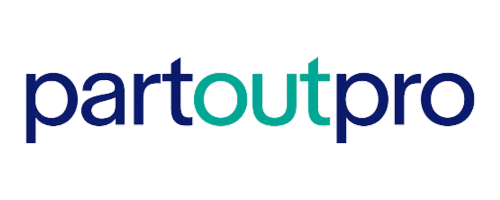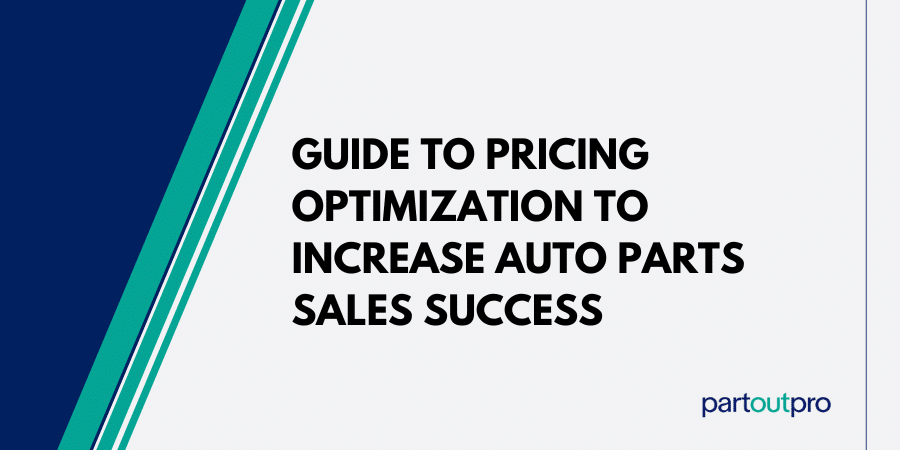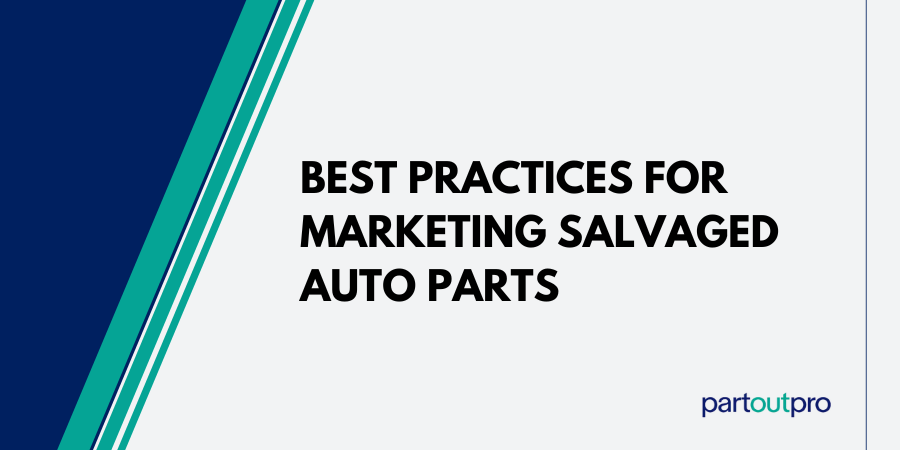Pricing optimization is the process of determining the most effective pricing strategy for your auto parts to maximize profitability while remaining competitive in the marketplace. A well-executed pricing strategy can attract more buyers, increase sales volume, and ultimately drive higher profits. By carefully analyzing market trends, competitor pricing, and demand dynamics, sellers can make informed pricing decisions that maximize their profit potential.
Let’s explore the importance of pricing optimization and how you can leverage integrated pricing optimization features offered by the right solutions provider to maximize your profit potential on eBay.
The Role of Integrated Pricing Optimization Features
Harnessing Advanced Algorithms and Data Analytics
Integrated pricing optimization features are powered by advanced algorithms and data analytics, making them indispensable tools for auto parts sellers on eBay. These algorithms are designed to analyze vast amounts of data, including market trends, competitor pricing, historical sales data, and buyer behavior. By processing this data, the algorithms generate actionable insights and recommendations for sellers, empowering them to make informed pricing decisions.
Gaining Insights into Market Landscape
Sellers gain insights into current market trends, including fluctuations in demand, shifts in consumer preferences, and changes in competitor pricing strategies. Armed with this information, sellers can adjust their pricing strategy in real-time to capitalize on market opportunities and remain competitive.
Personalized Recommendations for Pricing Adjustments
Integrated pricing optimization features offer sellers personalized recommendations for pricing adjustments based on their unique inventory and business goals. Whether it’s adjusting prices to match competitor offerings, capitalizing on peak demand periods, or optimizing pricing to maximize profit margins, sellers receive tailored recommendations that align with their specific needs and objectives.
Making Data-Driven Decisions
Sellers no longer need to rely solely on intuition or guesswork when setting prices for their products. Instead, they can harness the power of technology to analyze data and identify pricing opportunities that may have otherwise gone unnoticed.
Striking the Perfect Balance
By harnessing the power of technology, sellers can ensure that their products are competitively priced while maximizing profit potential. Integrated pricing optimization features enable sellers to strike the perfect balance between attracting buyers with competitive pricing and maximizing profit margins. As a result, sellers can increase sales volume, drive higher profits, and maintain a strong competitive position in the marketplace.
Analyzing Market Trends and Competitor Pricing
Monitoring Fluctuations in Demand, Supply, and Consumer Preferences
By keeping a close eye on these factors, sellers can gain valuable insights into the dynamics of the market. For instance, understanding seasonal trends and peak demand periods can help sellers adjust their pricing strategy to capitalize on surges in consumer interest. Similarly, monitoring changes in supply levels can inform pricing decisions, particularly if certain parts become scarce or abundant in the market. Additionally, tracking shifts in consumer preferences allows sellers to align their pricing strategy with the products that are in highest demand.
Benchmarking Prices Against Competitors
By benchmarking their prices against those of competitors, sellers can gauge their competitiveness in the marketplace and identify opportunities for adjustment. For instance, if a seller’s prices are significantly higher than those of competitors for similar products, it may be necessary to reconsider pricing strategy to remain competitive. Conversely, if a seller’s prices are consistently lower than competitors’, it may indicate an opportunity to increase prices without sacrificing competitiveness.
Strategic Positioning and Adjustments
Armed with insights from market trend analysis and competitor pricing, sellers can strategically position their products and make informed pricing adjustments. For example, during periods of high demand, sellers may choose to adjust prices slightly upwards to capitalize on increased consumer interest. Conversely, during periods of low demand or heightened competition, sellers may implement temporary price reductions or promotions to attract buyers and maintain competitiveness.
Continuous Monitoring and Adaptation
Pricing optimization is not a one-time task but rather an ongoing process that requires continuous monitoring and adaptation. Market dynamics can change rapidly, and competitors may adjust their pricing strategies in response to shifts in demand or other external factors. Therefore, sellers must remain vigilant and agile, ready to adjust their pricing strategy as needed to stay ahead of the curve and maximize profitability.
Ensuring Accuracy and Compliance
Transparency and Accuracy
Pricing should be transparent and accurate, providing buyers with clear and reliable information about the cost of the auto parts. Sellers must ensure that prices accurately reflect the value of the products and are free from any misleading or deceptive practices. This includes clearly stating any additional fees or charges, such as shipping costs or taxes, to provide buyers with a complete picture of the total cost.
Compliance with eBay Guidelines
Sellers must also ensure that their pricing strategy complies with eBay’s guidelines and policies. eBay has specific rules and regulations governing pricing practices, including prohibitions on price gouging, price fixing, and other anti-competitive behaviors. Sellers should familiarize themselves with eBay’s policies and ensure that their pricing practices align with these guidelines to avoid potential repercussions.
Responding to Feedback and Market Changes
Feedback from buyers can provide valuable insights into pricing effectiveness and customer satisfaction. Sellers should carefully monitor feedback and reviews, paying attention to any comments or concerns related to pricing. Additionally, sellers should stay informed about market changes and trends, such as shifts in demand or changes in competitor pricing strategies, and adjust their pricing strategy accordingly.
Conclusion: Driving Success with Pricing Optimization
Pricing optimization is a critical strategy for increasing auto parts sales success on eBay. By leveraging integrated pricing optimization features offered by listing solutions systems and analyzing market trends, competitor pricing, and demand dynamics, sellers can optimize their pricing for maximum profitability while remaining competitive in the marketplace. With the right pricing strategy in place, sellers can attract more buyers, increase sales volume, and drive higher profits in the dynamic world of auto parts sales on eBay.
PartOutPRO offers a suite of tools and features designed to streamline the pricing process and maximize profitability for sellers. PartOutPRO allows sellers to implement dynamic pricing strategies based on real-time market conditions. Sellers can adjust prices dynamically to capitalize on fluctuations in demand, changes in competitor pricing, and other market dynamics. This flexibility enables sellers to optimize their pricing strategy for maximum profitability while remaining agile and responsive to market changes.
Sellers can easily update prices, monitor competitor pricing, and analyze market trends without leaving the PartOutPRO interface. This integration streamlines the pricing optimization process and ensures that sellers can effectively manage their pricing strategy across all their eBay listings.



